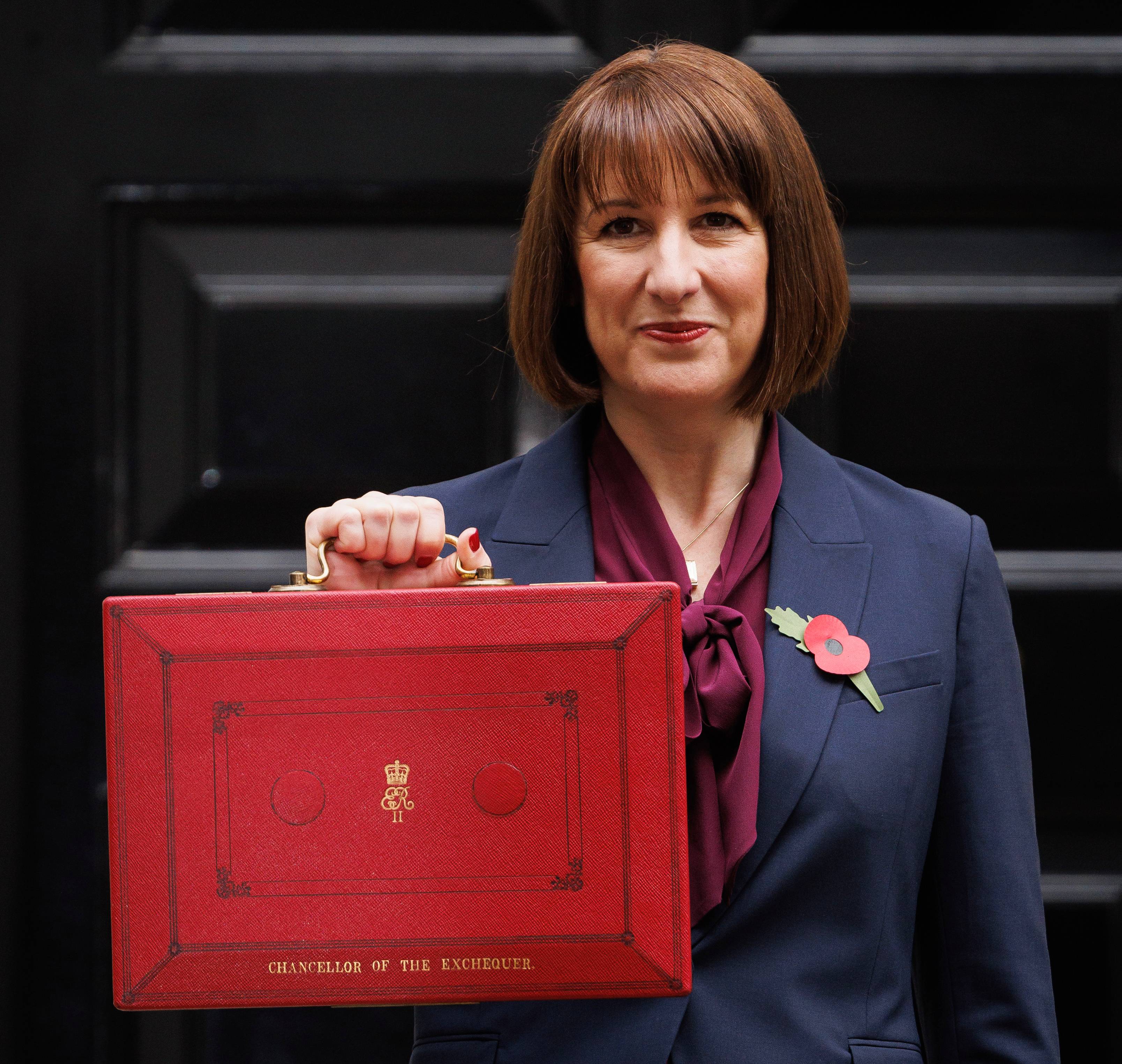Quarterly Investment Update Q2 2024: The many have taken over from the few
Will it be a case of the tortoise versus the hare, with last year’s winners taking a breather while the laggards catch up?

Article last updated 22 July 2025.
Developed market equities have continued to do well this year as the likelihood of recession recedes, particularly US equities. In contrast to the first ten months of 2023, when an unusually small number of stocks contributed to the gains of the entire US index, and most underperformed, more and more global companies are participating in this year’s rising markets. The performance of the so-called ‘Magnificent Seven’ mega-sized technology firms has been much closer to that of other large firms, as well as the returns of smaller and medium-sized companies.
It’s notable that the performance within the Magnificent Seven (Apple, Microsoft, Alphabet, Amazon, Nvidia, Meta and Tesla) has been very mixed recently. Three have underperformed so far in 2024. The ‘Seven’ is arguably no longer a particularly coherent grouping, given the very different drivers of those companies’ businesses, which we wrote about in the January edition of our Investment Insights magazine. It’s also worth remembering that, looking back over many decades, the very largest stocks in the index at any point in time, as indomitable as they may seem contemporaneously, usually underperform over five years or more. This is a strong argument against passive investing, which usually allocates more to the giants than other stocks.
While rising stock prices have been broadening out, substantial profit growth is still relatively rare and industry analysts have revised down forecasts for 2024 for all but the highest quality and sector-leading companies: finding these remains a core focus for us. While we believe that the outlook for the global economy and corporate profits has brightened significantly, the risks haven’t vanished entirely and we are conscious that some stock prices have moved ahead of where the outlook for profits suggests they should be. We have much more confidence than we did a few months ago that good returns can be achieved in the medium-term, but there may be another bump or two in the road ahead this year.
Slow off the mark
Advanced economies outside the US entered 2024 on a weak footing. In the second half of 2023, the UK joined 15 other advanced economies that have recently experienced a so-called ‘technical recession’ – two consecutive quarters of contracting GDP. In most cases, there was only a marginal contraction in output and stagnation is probably a fairer categorisation. The US continued to be the exception. GDP growth did slow in Q4 but, at a 3.2% annualised pace, was still strong.
Outside of the US, there is a growing body of evidence suggesting that the worst may now have passed. While low by historic standards, there had been a noticeable jump in our own global leading economic indicator by January, and further data has pushed the indicator a touch higher since then. Parts of the equity market more sensitive to these indicators, such as Eurozone equities, have been doing particularly well over recent weeks.
Business confidence surveys conducted around the world now stand at an eight-month high, as the service-sector outlook remains stable while the manufacturing outlook has improved. None of these indicators are strong in absolute terms and they have not been a great guide to growth since the pandemic. But it is still good news that they have turned the corner, because that’s what markets tend to respond to.
Emerging market equities have underperformed significantly over the last 12 months, led lower by China. We remain sceptical about China’s ability to outperform sustainably over the next few years, which we highlighted in our China past its peak report last year. Several factors continue to bear down on China’s trend growth rate, not least what will likely be a multi-year fallout from the bust of its overinflated property sector. But Chinese authorities appear to have done enough to stabilise the economy, with economic data improving over the last couple of months. This certainly helps the global economic outlook this year and should help broader investor sentiment.
Our analysis isn’t unequivocally optimistic. Survey-based measures of firms’ hiring plans have deteriorated and are consistent with an increase in unemployment. In the US, firms have already reduced the average worker’s hours and are shedding staff on temporary contracts, both have tended to signal a worsening outlook for full-time employment. That said, they suggested a weaker outlook last year. It may be that with skilled workers in short supply, most of the adjustment comes from firms hiring fewer people rather than laying off existing employees.
A number of indicators that give us the longest lead on what lies ahead, such as the inflation-adjusted amount of money in the economy or commercial banks’ willingness to lend among others, have ticked up too and that’s encouraging. But because of the long look ahead they give us, this tells us more about the likelihood of a downturn continuing into 2025. The outlook for 2024 is indicated by last year’s readings, which suggested recession, and it’s important to acknowledge this risk.
In sum, more data is pointing up and we are more optimistic. Markets tend to respond more to the rate of change than they do to the level of these sorts of readings. But we think there is still about a one-third risk of recession across the developed economies in aggregate, and that makes us retain an element of defence in our investment strategy. The good news is that the traditional ballast in multi-asset portfolios, government bonds, are looking particularly attractive.
Tilting toward gilts
There’s an asymmetry in the potential returns from UK government bonds (gilts) which makes them, in our opinion, a relatively low-cost way of hedging against the risk of a setback in equities and other riskier assets as well as a useful source of return for investors with a lower appetite for risk.
Following the shallow technical recession at the end of last year, UK GDP rose in January, recovering most of the ground lost already, and our analysis suggests that activity has continued to recover in February and March: a much-watched business survey aggregating activity in all sectors of the economy reached a nine-month high, while there are fewer days being lost to strike action.
If this continues, UK interest rates are likely to fall by at least the three quarter-point cuts currently implied by market pricing, so bond returns (which tend to move inversely to interest rates) would likely be moderate. However, the lagged impact of past interest rate rises and tighter fiscal policy present powerful headwinds that mean growth is likely to be weak at best, and the economy is still vulnerable to a more typical recession. In this event, interest rates would likely fall by much more than is widely anticipated, causing gilt returns to be strong. If inflation proved sticky, we may get another two or three interest rate rises, and gilts could suffer capital losses, though probably only mildly so. And, of course, if held to maturity we know that we would still earn a positive return over the life of the bond (in addition to the regular coupon payments, investors would get back the face value of the bond when it matures).
Sunnier days for UK inflation
Here in the UK, the inflation rate is on a downward trend. Energy price deflation should continue into the end of the year. Consumer food price inflation, which was adding c.1.5 percentage points (ppt) to headline inflation in January, is set to drop to zero (it follows producer food price inflation closely, with a six-month delay), bringing overall inflation to less than 2% in the spring. Services prices have been the most persistent component of inflation in advanced economies for some time now: they are the reason core inflation is still above target. In the UK, services inflation is still only around 1.5 ppt below last July’s peak. But this year-on-year rate masks a sharper drop-off in monthly price rises lately, and surveys that give a lead on the future are cause for optimism too.
One factor underpinning weaker inflationary pressure in the services sector is a downward trend in wage growth. Regular private earnings grew at only about a 3% annualised pace over the last two quarters of 2023. That’s roughly consistent with inflation at target. Such short-run data can be volatile, but even so, this is clear progress.
Tortoise versus hare
In the UK and the Eurozone, we’re confident about the direction of travel. US inflation came down more quickly last year, but things are in danger of getting a little stuck there. The three-month rate of change of core inflation has been rising since the autumn and is above the 6-month and 12-month rates of change. Again, the service sector is the culprit, with the annualised rate of three-month inflation spiking to 6% for two months in a row, a big reversal from having fallen back down to within a whisker of 2% in late summer 2023. It’s not just a few prices behaving badly and having an unrepresentative influence: median inflation is far too strong too, again highlighting breadth.
We do expect it to continue to come down, particularly because wage growth is a key element of US service sector inflation, like it is in the UK. There are many leading indicators suggesting this. Perhaps most compelling is the advertised wages scraped from job posting websites like indeed.com. The hiring rate or the rate at which people are quitting, or the rate at which people are staying on employment benefits are all suggesting an even greater decline in wages in the months ahead.
However, if the last few years have taught us anything, it’s that we must be humble about our ability to truly understand the inflation-forming process, and until we get to the finish line, we have to acknowledge that there is still some upside risk.
Financial markets are pricing in more or less the same rate cuts in the US as the UK this year. Historically, that scale of cuts would be mild. We believe the risks to interest rates seem to be tilted to the downside, but much more so in the UK than the US where the risks appear most balanced. So for the moment we prefer UK bonds to American ones.
When small is beautiful
Given the improving outlook for growth and relative valuations, we see the long-term prospects of smaller and mid-market companies as particularly attractive. For the first time since the 1988 inception of the Russell 2000 index of smaller American companies, the S&P 500 large company index made a new high while the Russell was still in a bear market, off 20% from its highs. Of course, small and mid-sized companies are still vulnerable to a pullback if we do get a deeper economic downturn, while relative valuations don’t tell us much of anything about short-term performance prospects. But it does give us more confidence in the potential for medium-to-long-term returns.
We recognise that some other parts of the market may have moved ahead of where the outlook for profits suggests they should be. The leading economic indicators we discussed earlier tend to have a close correlation with market returns, but recent gains in global equities have been consistent with past periods when these indicators have been their most ebullient. They are someway short of that today. The recent downward revisions to profit forecasts don’t preclude decent returns from equities this year, but our analysis suggest that this environment does tend to favour higher quality and possibly more defensive businesses. They did particularly well in January, and we’ll continue to focus on selecting quality businesses with resilient returns as the broader investment outlook brightens.
If you’d like join our investment experts at our next Investment Insights webinar on Tuesday, 16 April, to hear more about the outlook for the global economy and markets, you can register at this link.



